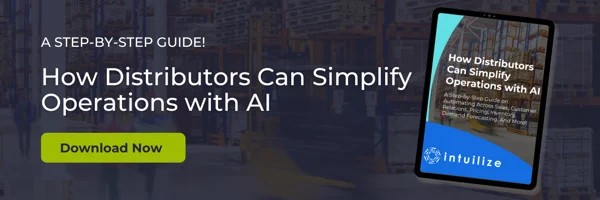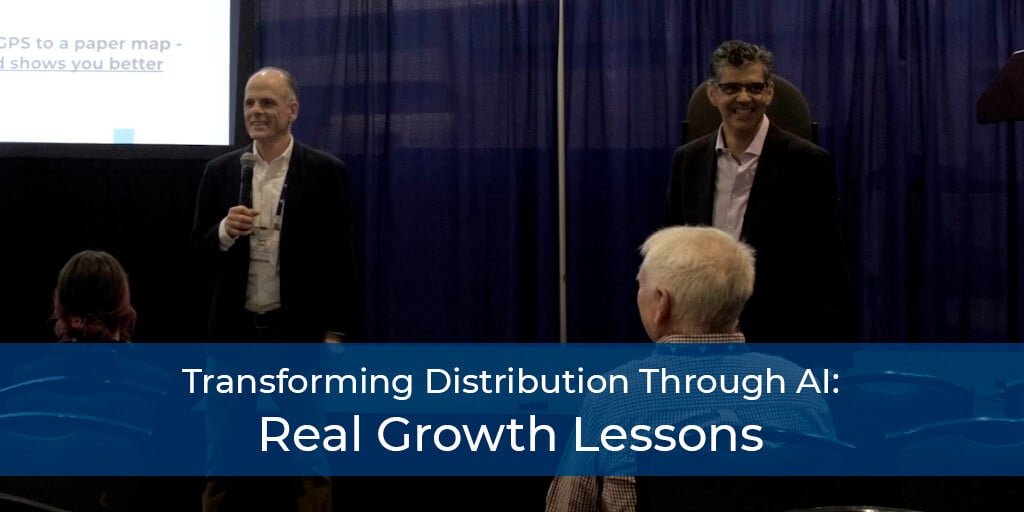
Historically, when it comes to pricing, striking the perfect balance between profitability and customer satisfaction is an art form that requires a deep understanding of market dynamics, consumer behavior, and financial strategies. AI technology can transform pricing for distributors from a subjective art to a precise science. Optimizing prices allows them to use their data to pinpoint the ideal price that pleases customers, attracts more buyers, boosts sales, and enhances profit margins.
Visualizing Effective Pricing Strategies
Distributors can learn valuable lessons from the consumer world on effective pricing strategies. Two common approaches in distribution are "Cost+" where costs are covered and a markup is added, and "current value" where pricing reflects perceived product and service benefits. For example, VMI contracts offer peace of mind to end users by preventing stock-outs.
The most lucrative approach, however, is "optimized value." Here, end users pay a premium for exceptional overall experiences with distributors. Some end users happily pay a premium of 100 to 700 basis points due to outstanding service and benefits received.

Data That Drives Pricing Decisions
Finding the price that balances customer appeal, value, and profit requires the analysis of a wide variety of data sources and data types that distributors have available to them. The more data that’s available, the better informed the pricing decision will be. Data that should be analyzed for price optimization includes:
- Customer surveys: Direct insights from customers provide insights into pricing expectations and perceived value.
- Historic sales: Past sales data helps surface pricing trends and consumer responsiveness.
- Current contracts: Information from existing contracts, such as Vendor Managed Inventory (VMI) and blanket orders, provides clues about price stability and customer loyalty.
- Current Inventory: Stock on hand can affect pricing strategy, especially in terms of supply and demand dynamics.
- Operating costs: Understanding the cost of business operations is crucial to ensuring pricing covers costs and generates profit.
- Labor overhead: The costs associated with labor can directly influence how products are priced.
- Quality reports: Insights into product quality can help determine premium pricing strategies.
- Customer’s vertical: Industry data guide tailored pricing strategies to match consumer profiles.
The market forces driving these data points function dynamically and unpredictably. Staying ahead of pricing in fluid relationships that link and satisfy provider, price, and end-user is challenging, and periods of economic volatility and continuing inflation will increase the effort required.
Factors That Influence Price Optimization
The illustration below shows three factors – willingness to pay, incremental profit, and objectives & constraints – that influence price optimization and help distributors find the optimal price for satisfying their needs as well as those of the customer.

As an example, if feedback from customers and sales representatives indicates a soft market for product XYZ, with manufacturers selling off excess stock, a deeper understanding of market dynamics is needed to identify an optimal price that doesn’t leave the distributor holding an excessive amount of stock of an underperforming product. Customer surveys are one tool that would provide insights into what buyers currently expect in terms of pricing and perceived value, which is especially useful in assessing willingness to pay.
Historical sales trends are another useful data point. In this example, these trends align with customer feedback and show increased inventory for the past six months. Furthermore, forecasts predict a decline in activity in this customer vertical for the next 12 months. These factors indicate demand for this product will be limited for some time.
A distributor seeking to optimize prices under these conditions would consider testing price decreases to gauge price elasticity and customer willingness to pay within this specific vertical. Because of constraints, including existing inventory in warehouses and manufacturer efforts to clear their stock positions, the distributor may have to sacrifice some of its incremental profit in order to find an optimal price that keeps product XYZ moving until demand increases.
Why AI is Critical for Price Optimization
Price optimization is time and labor-intensive. It depends on information-rich and accurate data sets. This pricing practice requires the distributor to always consider value, avoid guessing, and offer discounts prudently.
Only AI technology can reduce the resources needed for the price optimization process because of its ability to consume and metabolize massive databases for forecasting high-impact trends in product costs, overhead, and customer behavior.
AI can also respond to dynamic markets, offering high visibility on real-time efforts and results. It integrates seamlessly with commonly used ERP systems but operates well beyond their scope. And the best-in-breed AI systems coordinate pricing optimization with inventory optimization.
Discover More: Optimize with AI
Ready to transform how you manage inventory and pricing? Dive deeper into the possibilities with our comprehensive whitepaper, Thriving in an Age of Disruption: Transforming Distribution with Inventory and Price Optimization." Here’s what you’ll learn:
- Strategic Balance: Mastering the crucial balance between service-to-inventory and cost-to-price ratios.
- AI-Driven Processes: How AI and Machine Learning can revolutionize inventory management and pricing strategies.
- Real-Time Data: Leveraging real-time analytics to maintain optimal stock levels and adjust pricing instantly.
- Best Practices: Practical steps for implementing AI solutions in your distribution strategy.
And if that is a bit too steep a change for you, you can always download our Guide: "How Distributors Can Simplify Operations with AI" which offers step-by-step frameworks to implement AI tools into each step of your sales process.








